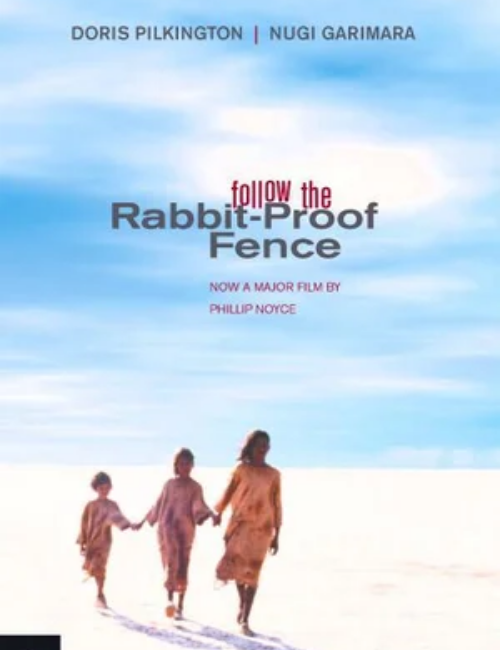This is one of those incredibly important books my kids read in school. I wish I’d read it then. Actually, I wish it had been written decades ago so I could have read it way back when and been totally inspired by their courage, their tenacity and their skills.
A little history needed to understand why this book is so important. When Australia was first settled by the whites it was on the understanding that there were no people living in the country. The Indigenous population was listed as animals rather than people, it was a convenient lie to indicate we’d not invaded another culture’s country. As white people spread over the land the government felt the half caste children needed saving and integrating into white culture. This was the Stolen Generation and the subject of this book. The three girls were taken away from their families and culture to be educated and integrated as servants within white families. This continued long into my lifetime. It was fairly recently in 1967 that the Indigenous Peoples were counted as people within the Census. That took a referendum to delete a clause from Section 51 and completely remove Section 127 from the Constitution. Essentially, these girls, aged Daisy 8, Gracie 11 and Molly 14, were treated as goods and chattel rather than people.
While I was reading I took issue with how well the people spoke. It was set almost ninety years ago when people were less educated, a time when schooling finished at a much earlier age than it does now. So I went through the book at a rate of knots finding it really challenging to put down and being upset at how educated they sounded. After I finished the text, knowing the girls were safe back with their own people, I was able to get some clarity. One of the reasons the three girls managed to walk the 1,600 km through the remote Western Australia countryside is because they had absorbed the lessons they’d been taught by their family about living in the bush. They were able to do what I could never do and find food, kill and dress rabbits and essentially survive in the Australian bush. While my brain would have liked more distinction in grammar between the whites and the Indigenous reflection shows me that would have been inappropriate. It wouldn’t have illustrated quite so clearly to me how much education they had in their own culture. They might not have done well in my world, but I would not have been able to survive in their world.
I know they had some help. They met various people along the way who gave them some food and some matches. Not that they needed matches as they could quite easily build a fire without. I would have liked more details of some of their achievements. I mean, how did they build a fire without matches? Even before that we’re told they were able to look at the weather and know which direction the rain is likely to come from. Enabling them to dig out a rabbit burrow from a different direction and sleep inside it in comfort. What I’m saying is the little help they received does not detract from their achievements.
The storyline is interspersed with snippets from official correspondence showing what the white government was actually doing, giving us some idea of the thinking processes involved and a timeframe. The three girls were taken from their families in Jigalong and left at the Moore River Native Settlement in August 1931. They were given to believe that they were being sent to school there and would then be taken home to their families. It was only once they were installed in Moore River that they found otherwise. They decamped fairly quickly and used their bush skills to avoid capture.
Some conversations at the end of the book show us the white people assumed these three girls had drowned. They also show some whites happy to hear the three girls had made it home safely.
Doing a little research to enable me to write this coherently makes me realise how much I’ve forgotten about the book. I read it some weeks ago and left it on my pile. I think I need to reread it. Not just to find out what I’ve forgotten but also to understand things more clearly and also to celebrate their achievements some more. This is a book I want to keep on my shelf and reread many times, much the same as my Anne McCaffrey or Terry Pratchett books. I’d suggest it gets better with rereading as I do more research and understand more of the issues. In that light my copy is going back on my shelf and you’ll have to get your own. Here’s an affiliate link so you can do exactly that.

